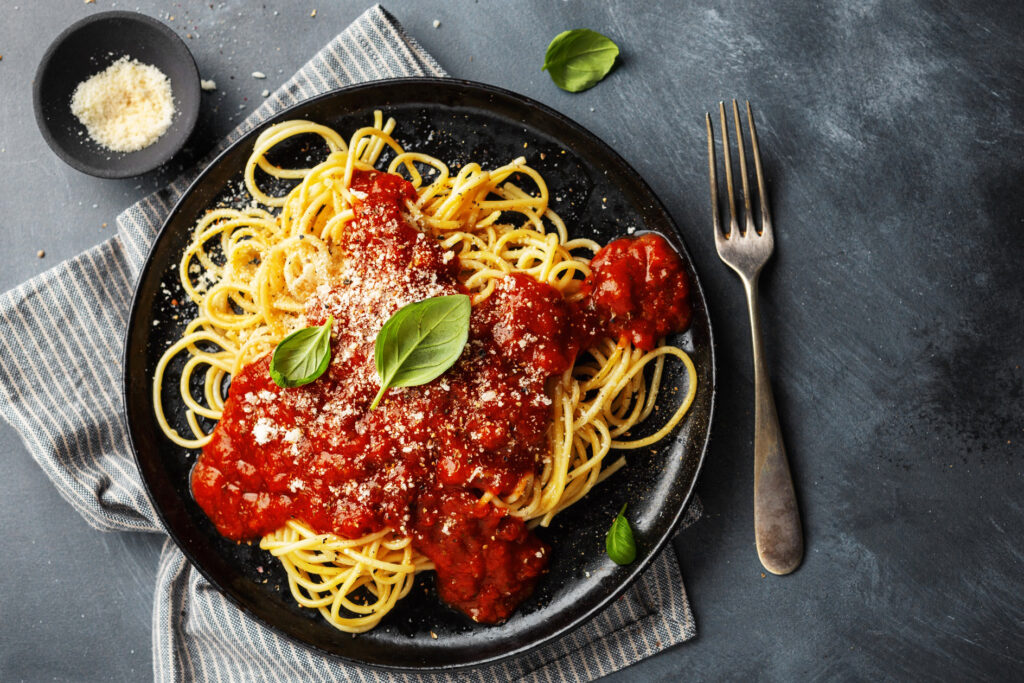Spaghetti with meatballs? Pad Thai? Mac ‘n cheese?
Pasta/ noodles are loved around the world. There are 600 different shapes and thirteen hundred different names for a food that fits into almost every cuisine. Go to Japan and they call it ramen. How about spätzle in Germany, patitsio in Greece, and toasted p’titim in Israel?
The world spends over twenty three billion dollars a year on a food that’s been around almost as long as humans. The leader in pasta consumption is, not surprisingly, Italy. The second and third consumers are surprising – Venezuela and Tunisia. On that top ten list of global pasta lovers, the US comes in at number seven.
Pasta, in one form or another, has been traced back as early as three thousand BC. That was the “bronze age”, with battling city-states in Mesopotamia, construction of the Egyptian pyramids, and ongoing revolutions.
While many food historians have debunked the Marco Polo story about pasta, it certainly is the most popular legend. Marco Polo was a dashing thirteenth century merchant, explorer, and writer from the Italian city-state of Venice. He traveled the Silk Roads that connected Europe and Asia. Polo became buddies with Kublai Khan (the grandson of the infamous Genghis Kahn) who ruled over China, Korea, and Mongolia. They shared many meals that included Chinese pasta made from long strips of fine dough. Polo loved the pasta and brought it back to Europe.
Another story claims that the Arab geographer Idrisi described pasta in 1154 – well before Marco Polo. The Arab word for noodle was itrijab. Some food historians give credit to the Arabs, along with introducing spinach, eggplant, and sugar cane.
Who knows? Either way, pasta was born a long time ago in China.
It was introduced to America much later in 1789, by foodie and future president, Thomas Jefferson.
Today, Italy is the largest producer of pasta in the world, followed by the United States. Spaghetti is the most popular type. The “national food” of Italy is spaghetti Bolognese. In the U.S it’s fettuccine alfredo, closely followed by macaroni and cheese, baked ziti, and spaghetti and meatballs.
Shape matters! Long or flat pasta like fettuccini and linguine are best with creamy sauces. Thicker, chunkier sauces are best with tube or spiral shapes, like rotini and penne. Soft, thick noodles are great with a winter stew like Hungarian goulash. Nothing can quite replace specialties like Japanese udon Soup, Jewish chicken noodle soup, lobster mac ‘n cheese, and Vietnamese pho.
President Thomas Jefferson savored macaroni and cheese made with a pasta machine from Naples, Italy. President Biden is well known for his love of “residential pasta” – angel hair Pomodoro. Megan Markle and Prince Harry love pastas from around the world, while Kate Hudson cooks her own lasagna (the recipe is on Instagram). Stanley Tucci hosts a tasty television series, Searching for Italy and his favorites are spaghetti with zucchini and tomato and basil pastas.
From presidents to royals, television food hosts and 4-star restaurants, that’s a lot of success for a simple dish made with only wheat (or another grain), water, salt, and sometimes eggs.
And you?







Hi Jeri, Love the pictures that go with the article. Especially the first one with the baby covered in noodles.
Wow! Who knew that humble pasta had such a pedigree? Fascinating! Not so humble after all. As always, you entertain and enlighten in such an excellent fashion.